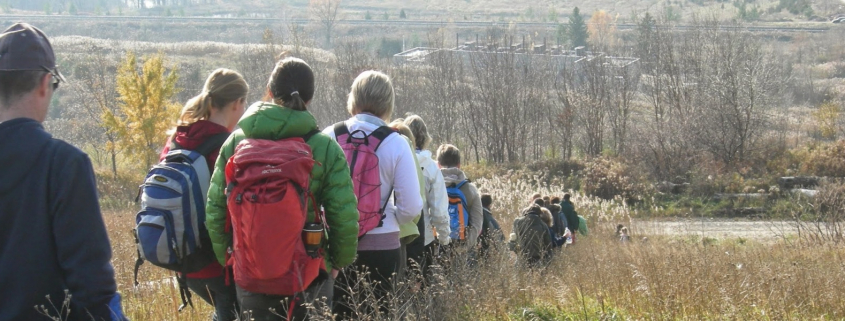To be the “Greenest School on Earth” in the eyes of the U.S. Green Building Council, it takes more than a few solar panels on the roof.
 Those are nice, of course. But you also need to teach sustainability throughout the curriculum and engage students in improving environmental performance. The greenest schools have an “all-school approach,” says Rachel Gutter, director of the group’s Center for Green Schools.
Those are nice, of course. But you also need to teach sustainability throughout the curriculum and engage students in improving environmental performance. The greenest schools have an “all-school approach,” says Rachel Gutter, director of the group’s Center for Green Schools.
This year the council is giving its top award to Dunbarton High School, in Ontario, Canada. Gutter says it exemplifies the top-to-bottom ethos, even if its building is less shiny and energy efficient than some. “The place where green schools can make the biggest impact—and where they fall down—is the level of engagement from the school occupants and the broader community, and whether they’ve created a culture of sustainability,” Gutter says.
 Dunbarton has a 40-seat outdoor classroom (meant to bring students closer to nature), a 5,000 square foot “pollinator garden” (designed to attract butterflies and the like), and “bee condominiums” (stacks of wood with holes to provide shelter for insects). It’s also installed energy efficient lighting and windows, introduced an organic waste management program, and takes part in an Atlantic salmon restoration program. Many of these initiatives are led by students.
Dunbarton has a 40-seat outdoor classroom (meant to bring students closer to nature), a 5,000 square foot “pollinator garden” (designed to attract butterflies and the like), and “bee condominiums” (stacks of wood with holes to provide shelter for insects). It’s also installed energy efficient lighting and windows, introduced an organic waste management program, and takes part in an Atlantic salmon restoration program. Many of these initiatives are led by students.
“One of the things we loved about Dunbarton is that so much of its activity is driven by the students and the community. We really believe that is the way it can be sustained and magnified,” Gutter says. “They’re also applying sustainability across many different subjects, from photography and art classes to finance and math.
The “Greenest School on Earth” title is a little misleading as the council doesn’t actually survey the planet for the best school. Instead, schools submit their own applications and a team of judges choose the ones it likes most. This year, schools from 20 countries came forward and the criteria encompassed three categories: how well schools are reducing energy, water and waste; how well they’re enhancing health and well being in their environment; and how well they’re teaching environmental “literacy.” The judging is subjective and relative: Schools are awarded for progress as much as absolute accomplishments.
 The judges gave an honorable mention to Vele Secondary School in Limpopo, South Africa. Unlike Dunbarton, which was built in the 1960s, it’s a new school with its own energy monitoring system, natural ventilation, and gardens for growing food. But it doesn’t engage students in the same way Dunbarton does, according to Carly Cowan, Center for Green Schools’s international program manager. “The big differentiating factor between Dunbarton and Vele is that Dunbarton’s students showed a lot more leadership and initiative in making the school green,” she says.
The judges gave an honorable mention to Vele Secondary School in Limpopo, South Africa. Unlike Dunbarton, which was built in the 1960s, it’s a new school with its own energy monitoring system, natural ventilation, and gardens for growing food. But it doesn’t engage students in the same way Dunbarton does, according to Carly Cowan, Center for Green Schools’s international program manager. “The big differentiating factor between Dunbarton and Vele is that Dunbarton’s students showed a lot more leadership and initiative in making the school green,” she says.
The big point is that schools can do a lot, even without big resources. What matters is whether people are willing to get involved. “There’s always an accessible project to be advanced at the student level or faculty and administration level,” says Gutter. “You can start anywhere and move on from there.”
Source: FastCoExist

